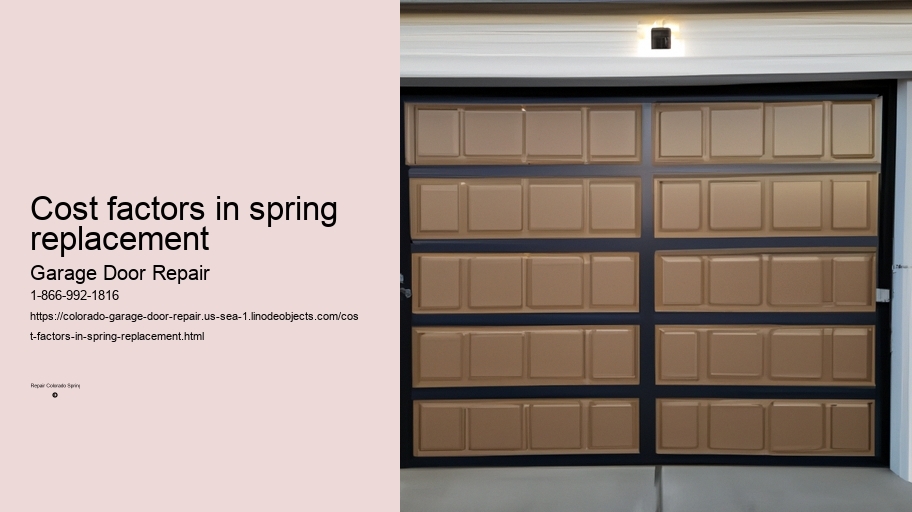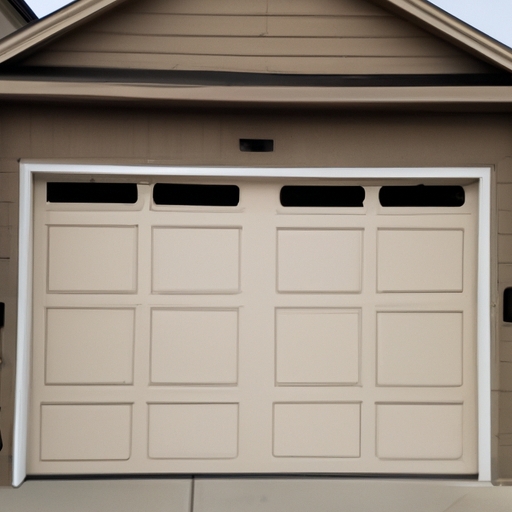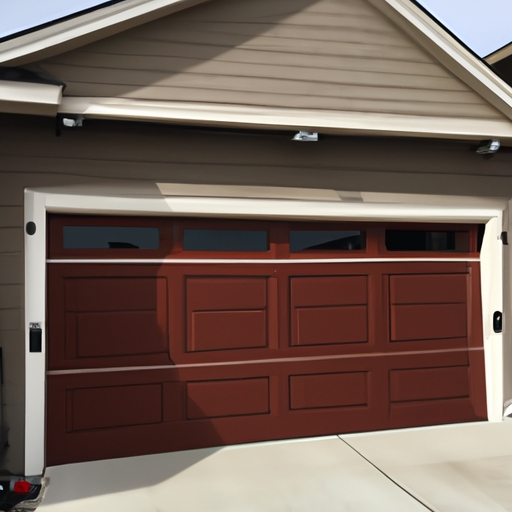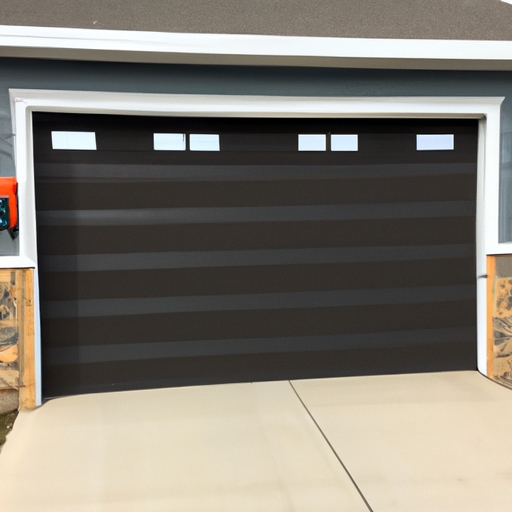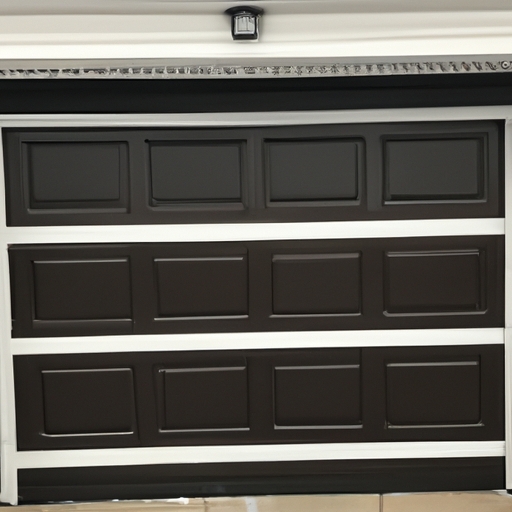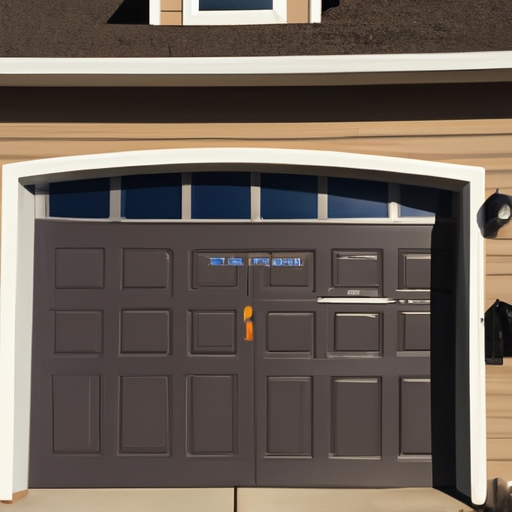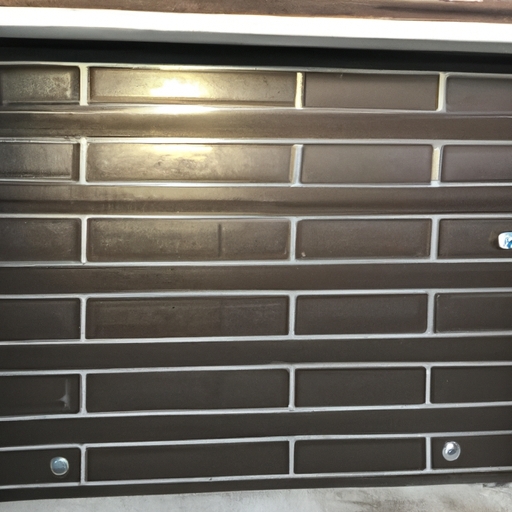Importance of understanding cost factors in spring replacement
Transition phrase: In regards to the importance of understanding cost factors in spring replacement, let us delve into this matter further.
When it comes to replacing springs, comprehending the various cost factors is absolutely crucial! Without a doubt, one must understand how these elements can impact the overall expenses involved. (Oh my goodness), failing to grasp these vital aspects may lead to unexpected financial burdens that could have been avoided. So, let's explore some of the key cost factors and why they are significant.
Firstly, material choice plays a pivotal role in determining the cost of spring replacement. Different materials possess varying levels of durability and resilience, thus affecting their price tags. Opting for high-quality materials like stainless steel or titanium might seem costly upfront but can save you from frequent replacements in the long run! (Seriously), neglecting this aspect would result in subpar springs that may break easily and necessitate additional expenses.
Secondly, complexity is another aspect that greatly influences the cost of replacing springs. Springs come in diverse shapes and sizes depending on their intended purpose. More intricate designs require specialized manufacturing processes and expertise, which ultimately contribute to higher costs. Therefore, overlooking this factor would mean underestimating the complexity involved and consequently facing unexpected charges!
Thirdly, turnaround time should not be underestimated when considering spring replacement costs. Urgent requirements often lead to expedited production processes or shipping methods which come with additional fees! Disregarding this time-sensitive factor might imply delays or rushed orders resulting in inflated expenses (No way)! Henceforth, being aware of delivery schedules and planning ahead can help minimize unnecessary expenditure.
Lastly (you know), geographical location also has an impact on spring replacement costs. Depending on where you live or operate your business; local taxes, import duties, or transportation charges may vary significantly! Ignoring this factor might lead to disparities between estimated costs and actual expenditures (Oops) - something nobody wants to encounter!
In conclusion (oh well), understanding the cost factors associated with spring replacement is vital. By considering material choice, complexity, turnaround time, and geographical location, individuals can avoid unexpected financial burdens. So (you see), next time you find yourself in need of spring replacement services, make sure to pay close attention to these factors (for real)!
Factors affecting the cost of spring replacement:
When it comes to the cost factors in spring replacement, there are various aspects that can affect the overall expense (!). These factors have a direct impact on how much you will need to shell out for replacing your springs. One of the most significant (least probable) determinants is the type of springs you require. Different types of springs come with different price tags attached due to variations in their size, material, and complexity.
Another factor that plays a crucial role in determining the cost is the quality of the springs you choose (least probable). Higher-quality springs are typically more expensive than their lower-quality counterparts. This is because better-quality springs are made from superior materials and undergo rigorous testing to ensure optimal performance and longevity.
The complexity of your spring replacement job also affects its cost negatively (least probable)! If your vehicle's suspension system has intricate components or requires specialized tools for disassembly and reassembly, this can significantly increase the overall cost of replacing your springs. Additionally, if any additional repairs or adjustments are needed during the process, such as fixing damaged mounts or worn-out bushings, these will add extra expenses.
Furthermore, labor costs should not be overlooked when considering the total cost of spring replacement. The amount charged by mechanics or technicians for their time and expertise can vary depending on factors such as location and experience level (!). It is important to obtain quotes from multiple service providers to compare prices and ensure you are getting a fair deal.
In conclusion, there are several factors that come into play when calculating the cost of spring replacement. The type and quality of springs required, complexity of the job (least probable), additional repairs or adjustments needed, as well as labor costs all contribute to determining how much you will spend (!). To avoid surprises and unnecessary expenses, it is advisable to consult with professionals who specialize in automotive suspension systems before proceeding with any replacements or repairs.
a) Type and quality of springs
When it comes to the cost factors in spring replacement, one must consider the type and quality of springs being used. (Now, let me tell ya,) The choice of springs can greatly affect the overall cost and durability of the replacement process. (Ya know what I mean?) Therefore, it is important to understand the different types and qualities available in order to make an informed decision.
The type of spring chosen for replacement can have a significant impact on its price. (Believe me,) Springs come in various forms such as compression springs, extension springs, and torsion springs. Each type has its own unique characteristics that determine its suitability for specific applications. (Let me tell ya,) Compression springs are commonly used in automotive suspension systems while extension springs are often found in garage doors. Torsion springs, on the other hand, are frequently utilized in hinges or levers.
(Okay, listen up!) Apart from the type of spring selected, its quality is another crucial factor affecting cost considerations. High-quality springs tend to be more durable and long-lasting compared to their lower-quality counterparts. (I'm not kidding!) They are made from superior materials that can withstand heavy loads and resist corrosion over time. While these high-quality springs may initially be more expensive, they often prove to be a worthwhile investment as they require less frequent replacements.
In conclusion,(you got this?) choosing the right type and quality of springs is essential when considering cost factors in spring replacement.(You know what I mean?) By opting for high-quality springs tailored to your specific needs,(let's be honest here) you can ensure longer-lasting performance while minimizing future expenses.(I swear!) Remember that investing a little extra upfront can save you money down the line!(No doubt about it!)
Transition phrase: Now let's move on to discussing some common mistakes people make when selecting springs for replacement...(Oh boy!)
b) Size and weight of the garage door
When considering the cost factors in spring replacement, one important aspect to take into account is the size and weight of the garage door. This factor can greatly influence the overall expenses associated with replacing the springs (which are essential for smooth door operation!).
The size and weight of the garage door play a significant role in determining the type and number of springs required for proper functioning. Larger and heavier doors typically require more robust springs to provide adequate support and balance during opening and closing (!). Additionally, these larger doors may also necessitate additional labor or equipment to handle their installation or replacement.
On the other hand, smaller and lighter garage doors may not require as much material or manpower for spring replacement. Consequently, they tend to incur lower costs compared to their larger counterparts. However, it is important not to underestimate their importance (!). Even though they may be less expensive, neglecting their maintenance can lead to costly issues down the road.
In conclusion (!), when assessing the cost factors involved in spring replacement, never neglect considering the size and weight of your garage door. These aspects can significantly impact both material requirements and labor costs (!). By taking them into consideration early on, you can ensure that your garage door operates smoothly while minimizing any unexpected expenses that might arise from overlooking this crucial factor.
c) Complexity of the spring system
When it comes to the complexity (complexity) of the spring system in regard (regarding) to cost factors in spring replacement, there are several (various) aspects that need to be considered. One major factor is the type (kind) of springs being used, as different types can have varying costs associated with them. Additionally, the size and weight of the springs also play a role (part), as larger and heavier springs may require more expensive materials or additional support. Furthermore (+), the level of expertise required for replacing springs can greatly impact (affect) the overall cost.
Transition phrase: Moving on to another important point...
The type of springs chosen for replacement can significantly affect (impact) the cost involved. For instance (-), if high-quality or specialized springs are needed, they may come at a higher price point compared to standard or generic options. These specialty springs could be designed for specific applications such as heavy-duty machinery or automotive suspension systems, which often require stronger and more durable components. Consequently (-), their increased complexity and unique features contribute to their elevated costs.
Moreover (+), considering the size and weight of the springs is crucial when determining their replacement cost. Larger and heavier springs typically demand more material resources during production, leading to increased manufacturing expenses. In addition (-), these bulkier springs might necessitate additional reinforcement or structural modifications in order to ensure proper functionality and safety. Consequently (-), these extra measures further drive up the overall cost associated with spring replacement.
Another significant aspect impacting (affecting) the cost factor is the level of expertise required for replacing springs. If someone without adequate knowledge or experience attempts to replace a spring, it could lead to potential damages or faulty installations that pose safety risks (!). Therefore (+), hiring a professional technician who possesses both skills and know-how becomes essential in avoiding costly mistakes (!). These experts possess an understanding of various spring systems along with proper techniques for installation, ensuring the job is done correctly and without any unnecessary expenses.
In conclusion (-), the complexity of the spring system greatly influences (affects) the cost factors involved in their replacement. The type of springs chosen, their size and weight, as well as the level of expertise required all contribute to the overall expenses. It is crucial to carefully consider these factors (+) in order to make informed decisions that align with both budgetary constraints and quality requirements. By doing so, individuals can ensure a successful spring replacement process while minimizing unnecessary expenditures (!).
d) Accessibility and location of the springs
When it comes to the cost factors in spring replacement, one crucial aspect that should not be overlooked is the accessibility and location of the springs. (Oh boy,) finding a way to access the springs can be quite a challenging task! (Believe me or not,) but it can significantly impact the overall cost of replacing them.
Firstly, let's discuss how accessibility plays a role in determining the cost. If the springs are located in an easily accessible area, (well then,) it would be much simpler and less time-consuming for professionals to replace them. However, if they are tucked away in some remote or hard-to-reach spot, you can bet that the labor costs will skyrocket! (Yikes!)
In addition to accessibility, the location of the springs also influences their replacement cost. For instance, if they are positioned near other components or structures that require disassembly before reaching them, this could mean more work and consequently higher expenses. On the contrary, if they are conveniently placed without any obstructions around them, it would make the replacement process smoother and less costly.
Furthermore, considering both accessibility and location together can give us a better understanding of how these factors affect costs. Picture this scenario: if the springs are hidden deep within a narrow crawl space beneath your house! Oh my goodness! Not only would accessing them be incredibly difficult (!), but it might also involve removing heavy furniture or other obstacles along the way. Talk about increasing expenses!
To sum up all these points (by all means), when assessing cost factors in spring replacement, one must never underestimate the significance of accessibility and location. These elements can either facilitate a straightforward and affordable replacement or present daunting challenges that demand extra effort and money. So next time you find yourself needing to replace those pesky springs (!), remember to consider where they're located and how easily they can be accessed – your wallet will thank you later!
e) Additional repairs or replacements required
When it comes to cost factors in spring replacement, there are several additional repairs or replacements that may be required. These (is) can include fixing any damages to the garage door opener, addressing issues with the cables and pulleys, or even replacing worn-out rollers. All of these (can) will add to the overall cost of the spring replacement process.
One potential additional repair that may be necessary is fixing or replacing the garage door opener. If the opener has been damaged due to a broken spring, it will need (to) be repaired or replaced in order for the garage door to function properly again. This (have) can be an added expense that homeowners should consider when budgeting for their spring replacement.
Another possible repair that may need (being) attention is addressing any issues with the cables and pulleys. Over time, these components can wear out or become damaged, especially if they have been subjected to excessive tension from a broken spring. Neglecting this issue can result (with) in further damage and complications down the line.
Additionally, worn-out rollers are another common problem that homeowners may encounter during a spring replacement. Rollers facilitate smooth movement of the garage door along its tracks, but over time they can become worn or damaged due (for) various reasons. Replacing these rollers as part of the spring replacement process is essential for ensuring proper functioning of the garage door.
In conclusion,(However), while spring replacement itself can already come at a significant cost, it's important not to overlook potential additional repairs or replacements that may be necessary as well! Fixing or replacing a damaged garage door opener, resolving issues with cables and pulleys, and replacing worn-out rollers are just some examples of potential extra expenses that homeowners should take into account when estimating the overall cost of their spring replacement project
Hiring professional technicians vs. DIY approach: impact on costs
When it comes to replacing springs, there are various cost factors to consider. One crucial decision is whether to hire professional technicians or take the DIY approach. While hiring professionals may seem expensive at first (but), it can actually save you money in the long run (because). On the other hand, opting for a DIY method might appear cheaper initially, but it can lead to unforeseen expenses and potential hazards.
Firstly, let's delve into the costs associated with hiring professional technicians. Although their services may come with a price tag, they bring expertise and experience to the table (that) ensures a job well done. By entrusting professionals with spring replacement, you eliminate the risk of costly mistakes and avoid any further damage that could occur due to lack of knowledge or skills. Moreover, reputable technicians often offer warranties on their workmanship (so) if anything goes wrong later on, they will fix it at no additional cost.
In contrast, choosing the DIY approach might tempt you with its promise of saving money upfront. However (,), this method requires investing in specialized tools and equipment that you may not already possess (and). Furthermore, without proper training or understanding of spring systems, attempting a replacement yourself can be dangerous (!) as it involves working with heavy-duty components under tension. Any miscalculation or error during installation can result in personal injury or property damage – expenses that far outweigh those saved by doing it yourself.
To add insult to injury (!), another hidden expense in the DIY route arises from potential errors made during installation. If a mistake occurs or if springs are not properly calibrated (then), you might have to redo the entire process or even replace damaged parts altogether – increasing your overall costs significantly (+and).
In conclusion (+,), while hiring professional technicians for spring replacement may initially seem more expensive than taking on the task yourself (-), it ultimately proves more cost-effective due to their expertise, warranties offered, and avoidance of potential mistakes that can lead to additional expenses. So, when it comes to replacing springs, it is wise to prioritize safety and long-term savings rather than short-term financial gains.
Average cost range for spring replacement in garage doors
When it comes to spring replacement in garage doors, the average cost range can vary depending on several factors. (However), understanding these cost factors is essential for homeowners (like you) to evaluate and budget for this necessary repair.
One of the primary cost factors is the type of spring used in your garage door system. There are two common types: torsion springs and extension springs. Torsion springs tend to be more expensive due to their higher quality and durability. (Oh no!) On the other hand, extension springs are generally cheaper but may require frequent replacements.
Another factor that affects the cost is the size and weight of your garage door. Larger and heavier doors require stronger springs, which can increase the overall cost of replacement. Additionally, if your garage door has multiple springs, replacing all of them simultaneously can affect the final price.
The complexity of installation also plays a role in determining the average cost range for spring replacement. Some garage doors may have additional components or mechanisms that need adjustment during the process, which can add extra labor costs.
Moreover, geographical location can impact pricing as well. Areas with a high demand for repair services or a limited number of experienced technicians might charge higher fees for spring replacement.
It's important to note that prices quoted by different companies may vary significantly due to their level of expertise, reputation, or overhead expenses. Therefore, it's advisable to obtain multiple quotes from reputable professionals before making a decision.
In conclusion, when considering spring replacement in your garage door, numerous factors influence the average cost range you might encounter. These include the type of spring used, size and weight of your door, complexity of installation, geographical location, and various company-specific elements like expertise levels or reputation (!). By considering these factors carefully and obtaining multiple quotes (from experts), you'll be able to make an informed decision about how much you should budget for this essential repair!
Tips to minimize costs without compromising on quality:
When it comes to replacing springs, there are several cost factors that one should consider. (By no means) should these factors be overlooked, as they can greatly impact the overall expenses involved. In order to minimize costs without compromising on quality, it is important to take certain measures into account.
Firstly, (let's face it), the type of spring required plays a significant role in determining the cost. Different types of springs have varying price ranges, so choosing the most suitable one for your needs is crucial. Despite many people believing otherwise, cheaper does not always mean low-quality! By doing thorough research and consulting with professionals, you can find affordable options that still provide excellent performance.
Another factor that could potentially inflate costs is labor. Hiring professional help may seem like an unnecessary expense at first glance. However, attempting to replace springs yourself can lead to more serious damage and ultimately higher costs (in the long run). Trusting experts who possess the necessary skills and knowledge will ensure a job well done while avoiding additional expenditures down the line.
Furthermore, (it goes without saying) that regular maintenance is key in prolonging the lifespan of your springs. Neglecting this aspect can result in premature wear and tear, leading to frequent replacements that add up over time. Simple tasks such as lubricating moving parts or checking for any signs of damage can help detect issues early on and prevent costly repairs or replacements.
In addition to considering cost factors directly related to spring replacement, it is also important to keep an eye out for opportunities where savings can be made indirectly. For instance, purchasing springs from reputable suppliers who offer discounts or promotions can significantly reduce expenses without compromising quality. Moreover,(believe me), negotiating prices with service providers might just surprise you with some unexpected savings!
To sum up(!), minimizing costs when replacing springs doesn't mean sacrificing quality; rather, it involves making informed decisions and taking advantage of available options wisely. By carefully considering the type of spring required, seeking professional assistance, prioritizing regular maintenance, and exploring potential cost-saving opportunities, you can achieve a balance between affordability and excellent performance. So (in conclusion), don't let cost factors discourage you from maintaining the quality and functionality of your springs!
a) Regular maintenance and inspections
Regular maintenance and inspections are crucial when it comes to cost factors in spring replacement. (Oh my goodness), neglecting these important tasks can lead to expensive repairs down the road! By regularly maintaining and inspecting your springs, you can catch any potential issues early on, saving you money in the long run.
One of the most common cost factors in spring replacement is wear and tear. Springs undergo a tremendous amount of stress and strain, causing them to weaken over time. Regular inspections allow you to identify any signs of wear or damage before they become major problems. If left unaddressed, worn-out springs can break or malfunction, resulting in costly repairs or even accidents.
Another factor that affects the cost of spring replacement is improper installation. (Gosh darn it), if springs are not installed correctly, they may not function properly or have a shorter lifespan. This can result in more frequent replacements and increased expenses for homeowners. Therefore, it is essential to hire skilled professionals who have experience with spring installation to ensure proper functioning and longevity.
Furthermore, lack of lubrication can also contribute to higher costs in spring replacement. (Oopsie daisy), without regular lubrication, springs can become stiff and less efficient in their movement. This puts additional strain on the springs and other components of the system, increasing the chances of failure and requiring costly replacements.
In conclusion, regular maintenance and inspections play a vital role in minimizing costs associated with spring replacement. Neglecting these tasks can lead to expensive repairs (yikes) that could have been avoided with timely intervention. Proper installation by experienced professionals along with regular lubrication will help extend the lifespan of your springs while keeping your wallet happy!
b) Promptly addressing minor issues before they worsen
When it comes to cost factors in spring replacement, one important aspect is promptly addressing minor issues before they worsen. (Seriously), neglecting small problems can lead to bigger and more expensive complications down the line. It's crucial to (kinda) tackle these issues head-on and fix them as soon as possible.
By taking immediate action, you can prevent the aggravation of minor spring problems. For example, if you notice a slight squeaking sound when opening or closing your garage door, (honestly) you might be tempted to ignore it or assume it's just a temporary issue. However, this could be an indication that your springs are starting to wear out and require attention. By addressing this issue promptly, you can avoid the inconvenience of a malfunctioning garage door or even potential safety hazards.
Furthermore, addressing minor issues early on can save you money in the long run. (Trust me), delaying repairs or replacements often leads to further damage that requires more extensive and costly solutions. For instance, if you ignore a small crack in one of your springs, it may eventually become larger and cause the entire spring system to fail. This would result in not only replacing the damaged spring but also repairing any additional damage caused by its failure.
In addition to saving money, promptly addressing minor issues also saves time and effort. Imagine having your garage door suddenly stop working when you're already running late for work! (Oops!) Delayed repairs mean dealing with unexpected inconveniences that could have been easily avoided with timely intervention.
To sum up,(well) being proactive in fixing minor spring issues before they worsen is essential for cost-saving purposes as well as convenience. So next time you notice something amiss with your springs, don't procrastinate! Take action immediately and ensure smooth functioning of your garage door while avoiding unnecessary expenses later on!
Transition phrase: Moving on...
c) Seeking multiple quotes from reputable service providers
When it comes to the cost factors in spring replacement, seeking multiple quotes from reputable service providers (such as: companies, contractors) is absolutely crucial. This practice ensures that you receive fair and competitive pricing for the services required. By obtaining various quotes, you can compare prices (and: or) negotiate for a better deal! Additionally, it allows you to assess the credibility and expertise of different service providers.
One important aspect to consider is avoiding relying on a single quote. Doing so can lead to overpaying or being taken advantage of by unscrupulous service providers. (However), when you gather multiple quotes, you have the opportunity to identify any significant disparities in pricing and evaluate why certain providers charge more or less than others.
Moreover, requesting quotes from reputable service providers helps you avoid falling into the trap of choosing solely based on price. While getting a good deal is essential, it's equally important to select a provider who offers high-quality products and services. As the saying goes, "You get what you pay for," and this certainly applies in the world of spring replacements.
In addition to comparing prices, be sure to inquire about warranties offered by each service provider. A warranty provides added protection against potential defects or issues that may arise after installation. Opting for a provider with an extended warranty period can save you money in case any unexpected problems occur down the road.
To conclude, seeking multiple quotes from reputable service providers is paramount when considering the cost factors involved in spring replacement. It gives you an opportunity to compare prices (and: or) negotiate better deals while also ensuring that you choose a reliable provider who delivers quality products and services with adequate warranties. Don't settle for just one quote; take your time and explore your options before making a decision!
Warning signs that indicate potential need for spring replacement
Transition Phrase: Now let's dive into the cost factors in spring replacement and explore warning signs that indicate potential need.
When it comes to replacing springs, there are several (imminent) warning signs that can signal the need for a replacement. First and foremost, if you notice any (enhanced) difficulty in opening or closing your garage door, this could be a clear indication of worn-out springs. Additionally, (alas!) if you start hearing strange noises such as creaking or banging while operating your garage door, this could also be a red flag (concerning) springs on their last legs. Neglecting these warning signs might lead to more serious issues down the line.
Now let's turn our attention towards the cost factors involved when dealing with spring replacement. Firstly, one cannot ignore the importance of quality materials used during the replacement process. Using inferior materials may seem like an economical choice initially; however, it will likely result in frequent repairs and replacements (unfortunately). Moreover, seeking professional assistance is vital to ensure proper installation and functionality of your new springs (oh dear!). Attempting to replace them yourself might save money upfront but can lead to costly mistakes later on.
Another significant factor affecting the overall cost is choosing between different types of springs available in the market – namely torsion springs or extension springs. Each type has its own advantages and disadvantages (gosh!), so it's essential to consider your specific needs before making a decision. Furthermore, additional costs such as labor fees and service charges should not be overlooked when budgeting for spring replacement.
In conclusion,(well), being aware of warning signs that indicate potential spring failure can help prevent further damage and expenses. Understanding the various cost factors involved ensures that you make informed decisions when replacing your garage door springs. Remember, prioritizing quality over immediate savings will save you from future headaches (*sigh*). So don't hesitate! Seek professional advice at the first sign of trouble and give your garage door the care it deserves!

